Magnetic resonance imaging of musculoskeletal infections
- PMID: 35505859
- PMCID: PMC9047866
- DOI: 10.5114/pjr.2022.113825
Magnetic resonance imaging of musculoskeletal infections
Abstract
Magnetic resonance imaging (MRI) is a powerful imaging modality in the evaluation of musculoskeletal (MSK) soft tissue, joint, and bone infections. It allows prompt diagnosis and assessment of the extent of disease, which permits timely treatment to optimize long-term clinical outcomes. MRI is highly sensitive and specific in detecting the common findings of MSK infections, such as superficial and deep soft tissue oedema, joint, bursal and tendon sheath effusions, lymphadenopathy, bone marrow oedema, erosive bone changes and periostitis, and bone and cartilage destruction and sequestration. Contrast-enhanced MRI allows detection of non-enhancing fluid collections and necrotic tissues, rim-enhancing abscesses, heterogeneously or diffusely enhancing phlegmons, and enhancing active synovitis. Diffusion-weighted imaging (DWI) is useful in detecting soft-tissue abscesses, particularly in patients who cannot receive gadolinium-based intravenous contrast. MRI is less sensitive than computed tomography (CT) in detecting soft-tissue gas. This article describes the pathophysiology of pyogenic MSK infections, including the route of contamination and common causative organisms, typical MR imaging findings of various soft tissue infections including cellulitis, superficial and deep fasciitis and necrotizing fasciitis, pyomyositis, infectious bursitis, infectious tenosynovitis, and infectious lymphadenitis, and of joint and bone infections including septic arthritis and osteomyelitis (acute, subacute, and chronic). The authors also discuss MRI findings and pitfalls related to infected hardware and diabetic foot infections, and briefly review standards of treatment of various pyogenic MSK infections.
Keywords: MRI; cellulitis; fasciitis; osteomyelitis; pyomyositis; septic arthritis.
© Pol J Radiol 2022.
Conflict of interest statement
The authors declare that they have no conflict of interest.
Figures






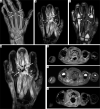







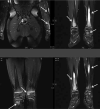
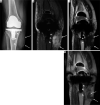

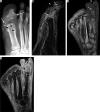

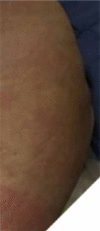


Similar articles
-
High-resolution ultrasound in the evaluation of musculoskeletal infections.J Ultrason. 2023 Nov 23;23(95):e272-e284. doi: 10.15557/jou.2023.0034. eCollection 2023 Oct. J Ultrason. 2023. PMID: 38020512 Free PMC article.
-
Imaging of musculoskeletal soft tissue infections.Skeletal Radiol. 2010 Oct;39(10):957-71. doi: 10.1007/s00256-009-0780-0. Epub 2009 Aug 28. Skeletal Radiol. 2010. PMID: 19714328 Review.
-
Ultrasonography of musculoskeletal infections in children.Eur Radiol. 2004 Mar;14 Suppl 4:L65-77. doi: 10.1007/s00330-003-2029-y. Eur Radiol. 2004. PMID: 14752567 Review.
-
CT and MRI evaluation of musculoskeletal infection.Crit Rev Diagn Imaging. 1997 Dec;38(6):535-68. Crit Rev Diagn Imaging. 1997. PMID: 9442978 Review.
-
Magnetic resonance imaging of rheumatological diseases.Pol J Radiol. 2022 Feb 20;87:e93-e112. doi: 10.5114/pjr.2022.113390. eCollection 2022. Pol J Radiol. 2022. PMID: 35280946 Free PMC article. Review.
Cited by
-
Arthritis or an Adjacent Fascial Response? A Case Report of Combined Pyomyositis and Aseptic Arthritis.Case Rep Rheumatol. 2024 Jun 25;2024:2608144. doi: 10.1155/2024/2608144. eCollection 2024. Case Rep Rheumatol. 2024. PMID: 38957409 Free PMC article.
-
Lower extremity infections: Essential anatomy and multimodality imaging findings.Skeletal Radiol. 2024 Oct;53(10):2121-2141. doi: 10.1007/s00256-024-04567-w. Epub 2024 Jan 20. Skeletal Radiol. 2024. PMID: 38244060 Free PMC article. Review.
-
Automated Radiosynthesis of [18F]Fluoromannitol for Clinical Research on a Commercially Available Trasis AllinOne Radiosynthesizer.Res Sq [Preprint]. 2025 Aug 1:rs.3.rs-7124066. doi: 10.21203/rs.3.rs-7124066/v1. Res Sq. 2025. PMID: 40766237 Free PMC article. Preprint.
-
Multifocal neuropathy and Horner's syndrome due to disseminated pyomyositis in an intravenous drug user.Neurol Sci. 2023 Dec;44(12):4519-4524. doi: 10.1007/s10072-023-07024-z. Epub 2023 Aug 31. Neurol Sci. 2023. PMID: 37651041 Free PMC article.
-
Comparison between ZOOMit DWI and conventional DWI in the assessment of foot and ankle infection: a prospective study.Eur Radiol. 2024 May;34(5):3483-3492. doi: 10.1007/s00330-023-10315-w. Epub 2023 Oct 18. Eur Radiol. 2024. PMID: 37848770
References
-
- Turecki MB, Taljanovic MS, Stubbs AY, et al. . Imaging of musculoskeletal soft tissue infections. Skeletal Radiol 2010; 39: 957-971. - PubMed
-
- Headley AJ. Necrotizing soft tissue infections: a primary care review. Am Fam Physician 2003; 68: 323-328. - PubMed
-
- Hill MK, Sanders CV. Skin and soft tissue infections in critical care. Crit Care Clin 1998; 14: 251-262. - PubMed
-
- Expert Panel on Musculoskeletal Imaging; Beaman FD, von Herrmann PF, Kransdorf MJ, et al. . ACR Appropriateness Criteria(®) suspected osteomyelitis, septic arthritis, or soft tissue infection (excluding spine and diabetic foot). J Am Coll Radiol 2017; 14 (5S): S326-S337. - PubMed
-
- Walker EA, Beaman FD, Wessell DE, et al. . ACR Appropriateness Criteria® suspected osteomyelitis of the foot in patients with diabetes mellitus. J Am Coll Radiol 2019, 16 (11S): S440-S450. - PubMed
Publication types
LinkOut - more resources
Full Text Sources
